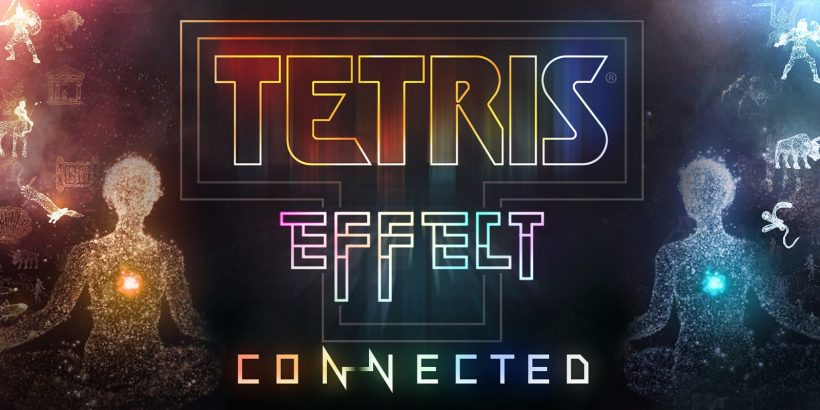Feel the recoil of the weapon in your hands, the dust motes dancing in the light, and the adrenaline surge as you peer around a corner. First-Person Shooter (FPS) games thrust you directly into the heart of the action, delivering a visceral, immersive experience where every strategic decision and every shot fired is seen through your own eyes.
More than just pointing and clicking, FPS games demand precision, lightning-fast reflexes, and tactical prowess. Whether you’re navigating a dystopian future, engaging in a historical conflict, or battling aliens on distant worlds, the genre excels at making you feel truly present in the moment, living out intense combat scenarios and engaging in high-stakes objectives.
This guide will aim down sights at the core mechanics that define FPS games, trace their explosive evolution from pixelated corridors to sprawling, photorealistic battlefields, and spotlight the iconic titles that have shaped this dominant genre. Get ready to experience combat like never before!
The Pulse of Combat: What Defines First-Person Shooters?
FPS games are fundamentally about combat from the player’s perspective, emphasizing direct interaction with weapons and the environment. Key defining characteristics include:
- First-Person Perspective: This is the defining trait. The camera is positioned as if it’s the player’s eyes, showing only the weapon, hands, and whatever lies in front of them, maximizing immersion.
- Gunplay & Weaponry: Core mechanics revolve around aiming, firing, reloading, and utilizing a diverse arsenal of firearms, explosives, and melee weapons. The “feel” of shooting is paramount.
- Movement & Positioning: Strategic movement, cover usage, flanking maneuvers, and map knowledge are critical for survival and success, especially in competitive multiplayer.
- Objective-Based Gameplay: Beyond simply eliminating enemies, many FPS games involve securing objectives, escorting targets, defusing bombs, or capturing control points.
- Skill-Based: Success in FPS often hinges on precision aiming, quick reflexes, strategic thinking, and effective team coordination, making mastery a rewarding pursuit.
- Environmental Interaction: Levels are designed to be navigated, often with multiple paths, vantage points, and interactive elements that can be used tactically.
From Pixels to Photorealism: The Evolution of First-Person Shooters
The FPS genre has had an explosive history, driving graphical advancements and online multiplayer trends:
- The Dawn of the Doom Clone (Early 1990s): While earlier experiments existed (Maze War, Wolfenstein 3D), Doom (1993) ignited the genre. Its fast-paced, demon-slaying action, network multiplayer, and modding capabilities created a cultural phenomenon and cemented the FPS as a viable and thrilling genre.
- Narrative Depth & Console Dominance (Late 1990s – Early 2000s): Half-Life (1998) redefined storytelling in FPS, integrating narrative seamlessly into gameplay without cutscenes. The original Halo: Combat Evolved (2001) became a console killer app, proving FPS games could thrive and dominate on consoles, popularizing the use of two-stick controls for aiming and movement.
- Online Multiplayer Explosion & Modern Warfare (Mid-2000s – 2010s): Call of Duty 4: Modern Warfare (2007) revolutionized online multiplayer with its progression systems, killstreaks, and fluid gunplay, setting a new standard for military shooters and casual competitive play. The Battlefield series excelled at large-scale vehicular warfare and destruction.
- Esports Powerhouses & Diverse Subgenres (2010s – Present): Games like Counter-Strike: Global Offensive (CS:GO) and Valorant became titans of esports, demanding incredible precision and teamwork. The genre diversified with “hero shooters” like Overwatch, offering unique character abilities, and “looter shooters” like Destiny and Borderlands, blending RPG progression with addictive gunplay. Battle Royale games also gained immense popularity, merging survival with FPS mechanics.
Tactics & Triggers: Key FPS Subgenres
The FPS landscape is incredibly varied, offering diverse combat experiences:
- Classic / Arena Shooters: Fast-paced, often focused on movement, weapon pickups, and quick reflexes in enclosed arenas (e.g., Doom Eternal, Quake Champions, Ultrakill).
- Tactical Shooters: Emphasize realism, slower pace, precise gunplay, strategic team coordination, and often harsh penalties for mistakes (e.g., Counter-Strike 2, Valorant, Rainbow Six Siege, Arma).
- Hero Shooters: Feature a roster of characters with unique abilities, roles (tank, support, damage), and often team-based objectives (e.g., Overwatch 2, Apex Legends, Paladins).
- Looter Shooters: Combine first-person shooting with RPG elements like character progression, rare loot, gear grinding, and often cooperative play (e.g., Destiny 2, Borderlands series, The Division).
- Military Shooters: Focus on realistic or semi-realistic military combat, often featuring large-scale battles, customizable loadouts, and a serious tone (e.g., Call of Duty series, Battlefield series).
- Survival Horror FPS: Blend first-person shooting with elements designed to frighten, often with resource scarcity, limited visibility, and terrifying enemies (e.g., F.E.A.R., Metro Exodus).
Iconic Firefights: Must-Play First-Person Shooters
These titles are celebrated for their impactful gameplay, innovative design, and lasting influence on the FPS genre:
- Doom (1993) / Doom Eternal (2020): The original defined the genre with its fast-paced demon-slaying; Eternal revitalized it with incredible speed, brutal combat puzzles, and heavy metal intensity.
- Half-Life 2 (2004): A landmark in narrative-driven FPS, seamlessly blending action with a compelling story, memorable characters, and innovative physics-based puzzles.
- Halo: Combat Evolved (2001) / Halo Infinite (2021): The console FPS king. CE revolutionized console shooters with its “30 seconds of fun” combat loop; Infinite offers a modern, open-world take on the iconic sci-fi battles.
- Call of Duty 4: Modern Warfare (2007): Redefined modern military shooters with its cinematic campaign, groundbreaking multiplayer progression, and fluid gunplay that set industry standards.
- Counter-Strike: Global Offensive (2012) / Counter-Strike 2 (2023): The undisputed king of tactical FPS esports, demanding unparalleled precision, teamwork, and map knowledge.
- Battlefield 1 (2016): A breathtaking large-scale military shooter set in WWI, renowned for its massive maps, vehicular combat, and environmental destruction.
- Overwatch (2016): A vibrant and accessible hero shooter that brought unique abilities, diverse characters, and objective-based team play to the forefront.
- Apex Legends (2019): A fast-paced, fluid battle royale that combines hero abilities with tight gunplay and an innovative ping system for seamless team communication.
- Valorant (2020): Riot Games’ tactical FPS that blends Counter-Strike‘s precision gunplay with unique agent abilities, quickly becoming an esports powerhouse.

Under the Radar Firepower: Underrated FPS Gems
Seek out these compelling FPS titles that deserve more attention:
- Titanfall 2 (2016): An incredibly polished and inventive military sci-fi shooter with a groundbreaking single-player campaign that’s a masterclass in varied level design, alongside fantastic multiplayer.
- Deep Rock Galactic (2020): A unique co-op FPS where dwarven miners explore procedurally generated caves, battling alien bugs and extracting resources. It’s addictive and immensely satisfying.
- F.E.A.R. (2005): Blends fast-paced gunplay with genuinely unsettling psychological horror elements and a strong emphasis on bullet time.
- Dusk (2018): A retro-inspired FPS that perfectly captures the fast-paced, chaotic energy of 90s shooters like Doom and Quake, with a unique cult-horror aesthetic.
- Ultrakill (Early Access – 2020): A hyper-violent, incredibly fast-paced, and stylish FPS that rewards aggressive, creative play with a unique scoring system, feeling like a modern arcade masterpiece.
Why We Answer the Call: The Enduring Appeal of FPS
The magnetic pull of First-Person Shooters lies in their ability to provide:
- Unparalleled Immersion: Experiencing the action directly through the protagonist’s eyes draws players deeper into the game world than almost any other genre.
- Adrenaline-Pumping Combat: The constant demand for quick reflexes, precise aim, and tactical thinking creates intense and thrilling gameplay loops.
- Competitive Thrill: The direct head-to-head competition, especially in online multiplayer, offers endless opportunities to test and prove skill.
- Strategic Depth: Beyond just shooting, mastering movement, positioning, weapon choice, and team coordination adds layers of rewarding strategic play.
- Escapism & Power Fantasy: The genre often allows players to embody powerful combatants in fantastical or intense scenarios, offering a unique sense of agency.
Conclusion: Lock and Load for Adventure!
First-Person Shooters are a cornerstone of the gaming world, delivering a visceral and immersive experience that keeps players coming back for more. They are a testament to rapid innovation, constantly pushing boundaries in graphics, gameplay, and competitive depth.
What’s the FPS that made you truly feel like you were in the action? Which game’s gunplay do you find most satisfying?
Now that you’ve explored the adrenaline-fueled world of First-Person Shooter games, we’d love to hear about your most intense firefights! Head over to our Review Page to share your personal reviews of your favorite FPS titles, discuss your most memorable headshots, or simply tell us what makes you answer the call to action!





Leave a Reply